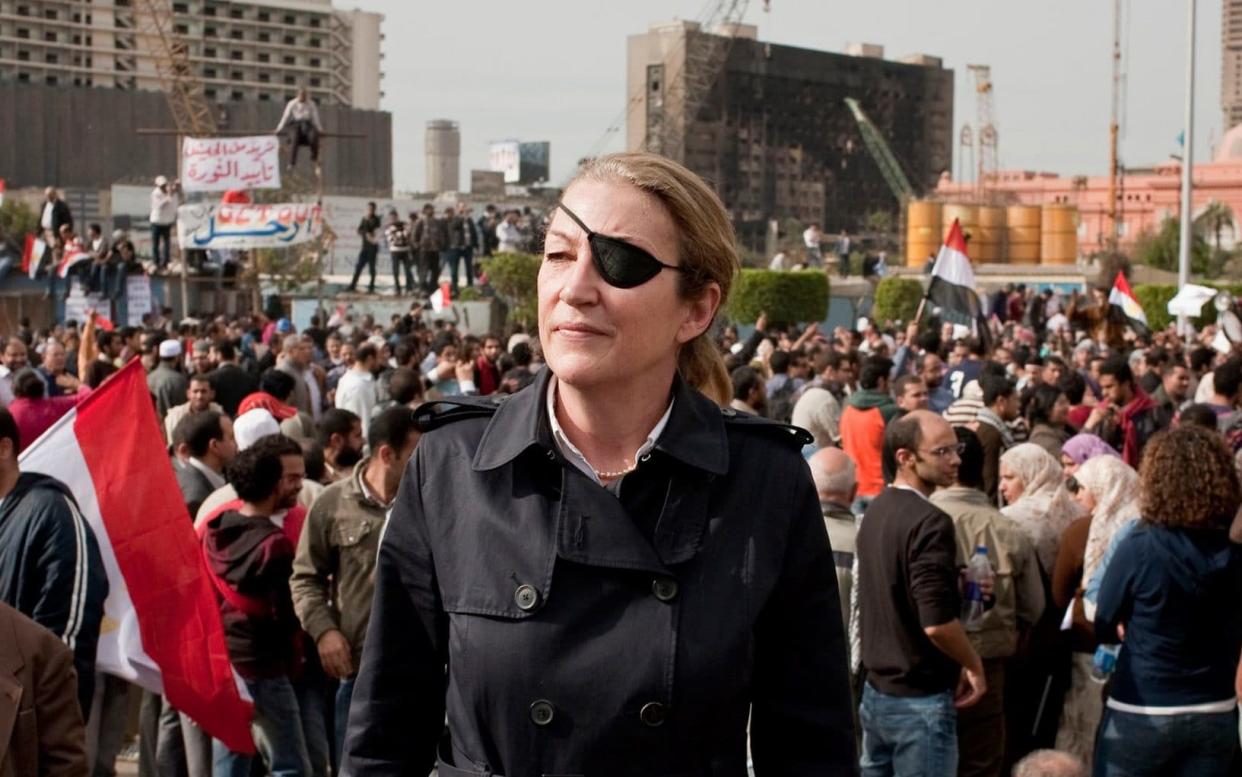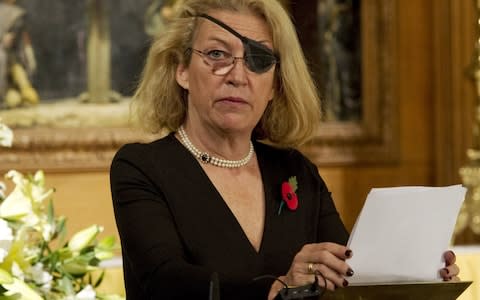Syrian government celebrated after targeting and killing journalist Marie Colvin, defector claims

The Syrian government celebrated after they targeted and killed veteran war correspondent Marie Colvin, a former Syrian intelligence officer has claimed.
British photographer Paul Conroy, French reporter Edith Bouvier, and Syrian interpreter Wael al-Omar were all wounded in the same attack.
The claims were made by the officer in newly released court documents filed as part of a wrongful death suit by Ms Colvin's family.
The former intelligence officer, code named Ulysses, provided a detailed account of how Syrian President Bashar Al-Assad's regime sought to capture or kill journalists and activists in Homs, a centre of the pro-democratic revolution that erupted across the country in 2011.

The defector claimed that when Ms Colvin's death was confirmed, Syrian Maj. Gen. Rafiq Shahadah exclaimed: "Marie Colvin was a dog and now she's dead. Let the Americans help her now."
His account appears to be corroborated by Syrian government documents filed as evidence in the case, which suggest the regime targeted her to silence her reporting on its atrocities.
The defector claimed that as an intelligence officer, he reviewed intelligence and surveillance reports from around the country during 2011 and 2012 and was privy to open and secure communications. He currently lives legally in Europe because he fears he is wanted by Syrian intelligence officials.
The lawsuit alleges that Syrian forces tracked Western journalists' movements and located their media centre so they could be captured or killed.
President Bashar al-Assad’s government claimed after the attack that they had not known who was in the house, or that any of the journalists were in the country as they had entered “illegally”.

However, the lawsuit alleges that Ms Colvin was in fact being tracked from neighbouring Lebanon after Syrian officials received information that she and Mr Conroy were planning to smuggle into the war-torn country.
She was reporting on the Syrian government's bombing of residential areas when she was killed by a rocket attack on a media centre.
The pair entered Homs through an underground water tunnel and toured a field hospital and a cellar called the "widow's basement" where mostly women and children sought shelter from the bombs.

As part of her reporting, Ms Colvin gave live interviews to the BBC and CNN. Syrian forces were "shelling with impunity and a merciless disregard for the civilians who simply cannot escape," she said.
The highest levels of the Syrian government, including President Assad's brother, were behind the plan to track the journalist once she entered Syria, the lawsuit claims, using a mobile satellite interception device that could tap broadcast signals and locate their origin as well as an informant on the ground.
As part of his testimony, the defector identified eight Syrian officials, including Mr Assad's brother Maher, who he claims were involved in the attack on the media center.

"The actual maliciousness that the Syrian regime had against Western reporters and their Syrian counterparts and sources is on display through multiple witnesses and multiple documents," said Scott Gilmore, the lawyer acting on behalf of Ms Colvin's family.
Her sister Cathleen is seeking an undetermined amount for the emotional pain of losing her sister, compensatory damages for her three children, who are beneficiaries of Ms Colvin's estate, and punitive damages against the Syrian government.
So far, the Syrian government has not filed any response to the lawsuit.
At least 100 journalists, most of them Syrian, have been killed in the country since the conflict began in 2011.
Ms Colvin’s killing came early on in the Syrian civil war, when, as the lawsuit claims, President Assad's regime was trying to silence local and international media "as part of its effort to crush political opposition".
A veteran foreign correspondent, Ms Colvin had years of experience reporting in war zones. She covered conflicts in Chechnya, Kosovo, Sierra Leone, Zimbabwe, East Timor and Sri Lanka where she lost the sight in her left eye in a blast. The black patch she wore over her eye became her trademark.

